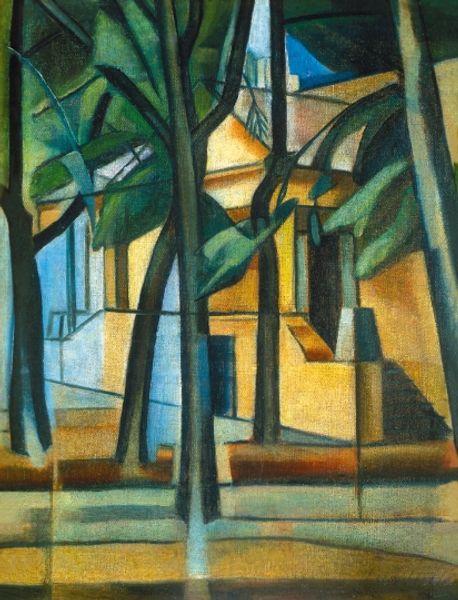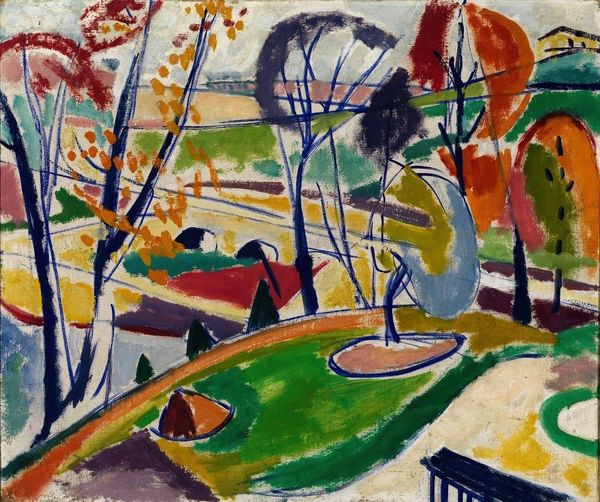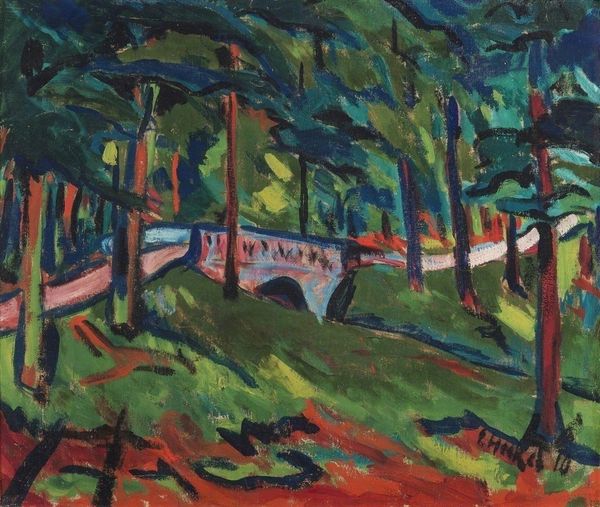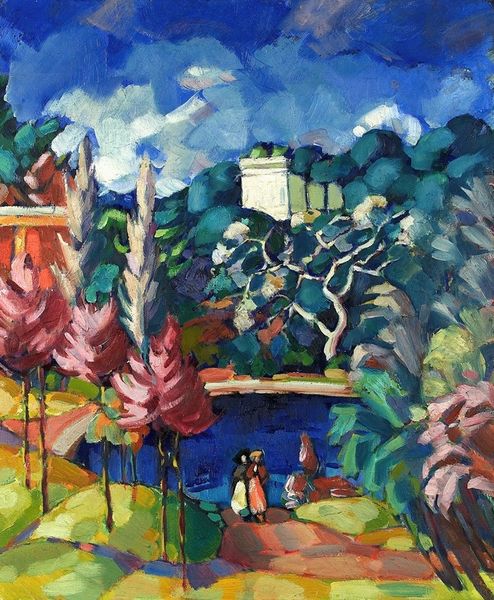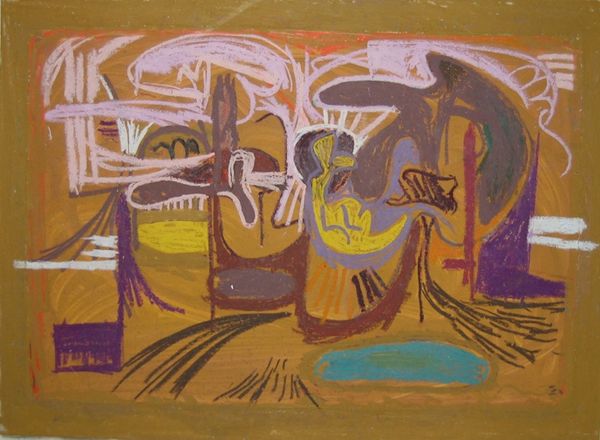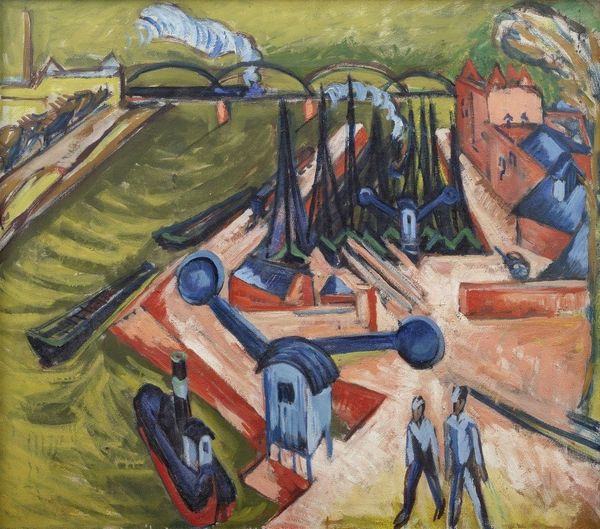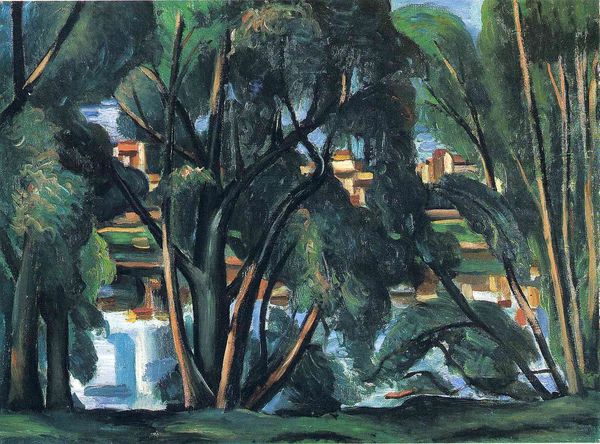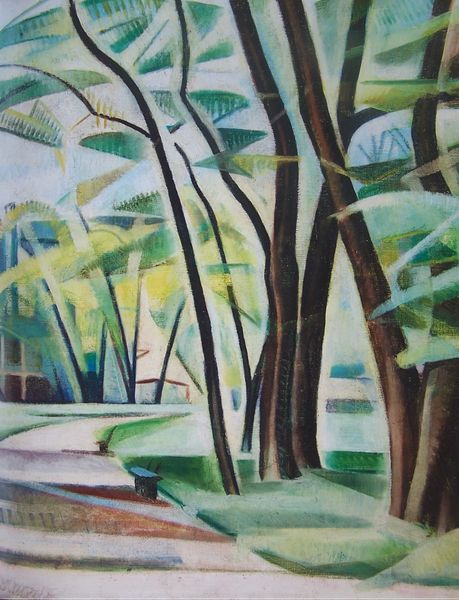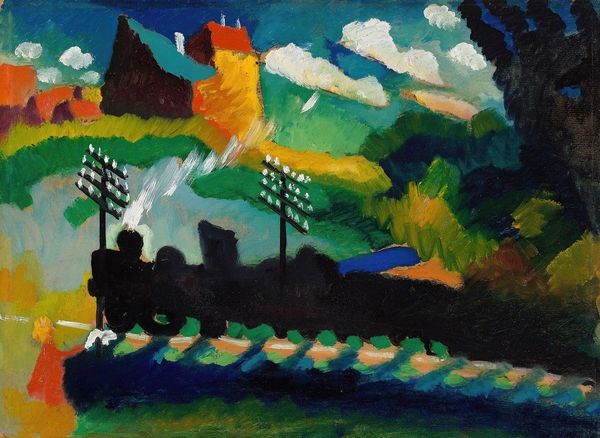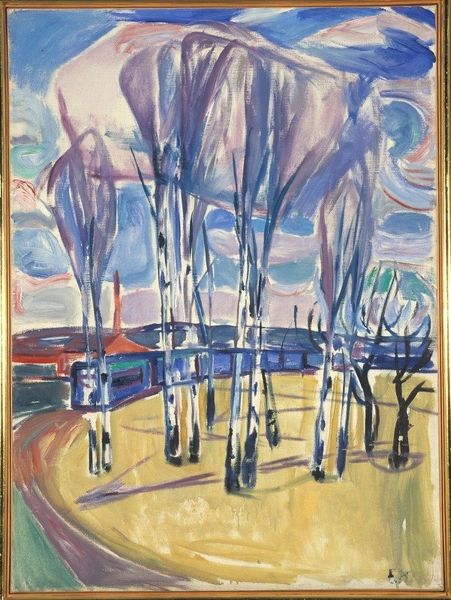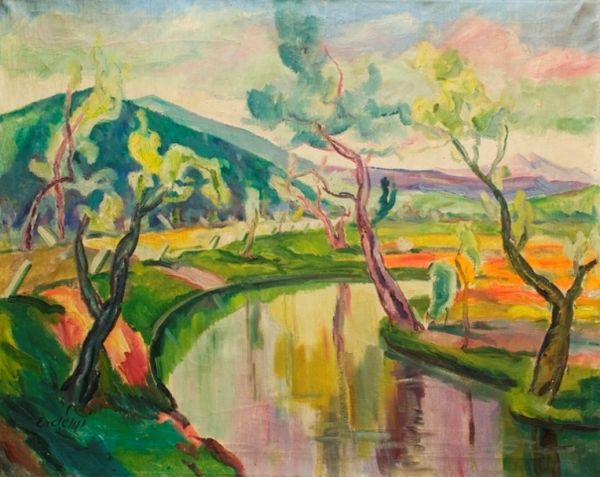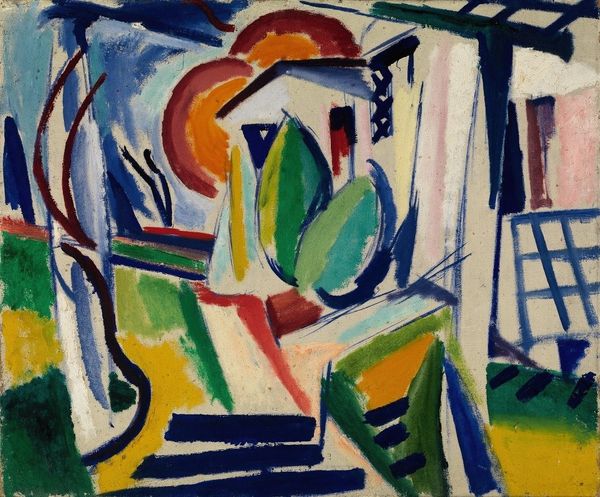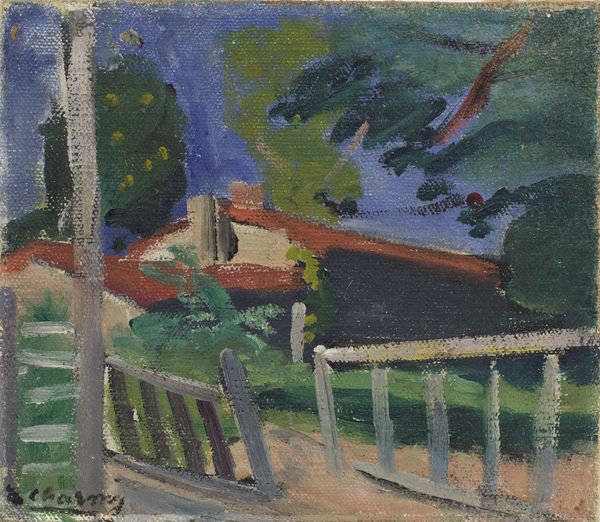
Dimensions: 72.4 x 91.4 cm
Copyright: Public domain
Editor: We’re looking at Ernst Ludwig Kirchner’s "Lützowufer (Banks of the Canal) at the Morning," an oil painting from 1929. It strikes me as somewhat fragmented and dreamlike. The composition is unexpected, almost as if different scenes are layered on top of each other. What catches your eye? Curator: Initially, the interplay between representation and abstraction presents itself as the painting's central tension. Consider the vigorous brushstrokes, seemingly independent of a clear representational function. Note how the coloration—the juxtaposition of greens, pinks, and blues—contributes to an unsettling, discordant harmony. To what effect might Kirchner be manipulating these formal elements? Editor: I see what you mean. The colors and lines definitely create a sense of unease. I'm not sure what it all means. Curator: Let us delve into the use of line. See how it demarcates forms, yet simultaneously undermines their solidity. It is through such techniques that the artwork seems to destabilize any singular, coherent reading. Do you perceive a hierarchy within these visual elements? Or does Kirchner suggest that line, color, and form bear equal significance? Editor: I guess it's more balanced than it looks. The line, colors, and form seem equally important. Curator: Precisely. In its fragmentation, "Lützowufer" compels us to reassess conventional modes of viewing. Its formal properties challenge us to examine the very nature of perception. Editor: It’s interesting how focusing on the elements of the painting can shift our understanding and challenge how we normally view things. I wouldn’t have noticed the fragmented composition otherwise. Curator: Indeed. The aesthetic experience is fundamentally dialogic, prompting a constant re-evaluation of what constitutes ‘art’ itself.
Comments
No comments
Be the first to comment and join the conversation on the ultimate creative platform.

